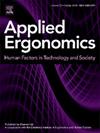是什么导致了对自动驾驶汽车的依赖?对可变自动驾驶汽车性能反应的推理分析
IF 3.4
2区 工程技术
Q2 ENGINEERING, INDUSTRIAL
引用次数: 0
摘要
适当使用自动驾驶汽车技术对于减少与自动驾驶相关的潜在安全风险至关重要。适当的使用要求对自动化的依赖具有可变性——具体来说,只有当自动化的性能与人类驾驶员相似或更好时,才需要依赖自动化。依赖在适当使用中的中心作用表明,迫切需要了解导致自动化依赖的因素。我们通过对49名参与者的驾驶模拟器研究来解决这一需求,在该研究中,驾驶员被要求在四个事件中使用部分车辆自动化技术做出依赖决策,这些事件代表了当前自动驾驶车辆做出的依赖决策。我们使用逐步逻辑回归分析来评估依赖惯性、情境信任、性格信任、情境意识和驾驶员人口统计学对依赖的作用。结果表明:交通情景对交通依赖的影响因素不同,交通惯性对交通依赖决策的影响最大,交通依赖与情景信任的关系大于与处置信任的关系。这些发现表明,我们需要一种技术来校准对自动驾驶汽车的依赖程度,而不是对自动驾驶汽车的信任程度,还需要对驾驶员对自动驾驶汽车的依赖程度进行更广泛的研究。本文章由计算机程序翻译,如有差异,请以英文原文为准。
What leads to reliance on automated vehicles? An inferential analysis of responses to variable AV performance
The appropriate use of automated vehicle technology is pivotal for reducing latent security risks associated with automated driving. Appropriate use demands variability in reliance on the automation—specifically, relying on the automation only when it is capable of similar or better performance than human drivers. The central role of reliance in appropriate use suggests a pressing need to understand the factors that contribute to automation reliance. We address this need through a driving simulator study of 49 participants, where drivers were asked to make reliance decisions with partial vehicle automation technology across four events representative of reliance decisions made in current automated vehicles. We used step-wise logistic regression analysis to assess the role of reliance inertia, situational trust, dispositional trust, situation awareness, and driver demographics on reliance. The results suggest that the factors that influence reliance vary by the traffic scenario, that reliance inertia has the strongest influence on subsequent reliance decisions, and that reliance was more strongly related to situational trust than dispositional trust. These findings suggest a need for technologies that calibrate reliance rather than trust in AVs and for additional broader studies of driver reliance on AV.
求助全文
通过发布文献求助,成功后即可免费获取论文全文。
去求助
来源期刊

Applied Ergonomics
工程技术-工程:工业
CiteScore
7.50
自引率
9.40%
发文量
248
审稿时长
53 days
期刊介绍:
Applied Ergonomics is aimed at ergonomists and all those interested in applying ergonomics/human factors in the design, planning and management of technical and social systems at work or leisure. Readership is truly international with subscribers in over 50 countries. Professionals for whom Applied Ergonomics is of interest include: ergonomists, designers, industrial engineers, health and safety specialists, systems engineers, design engineers, organizational psychologists, occupational health specialists and human-computer interaction specialists.
 求助内容:
求助内容: 应助结果提醒方式:
应助结果提醒方式:


